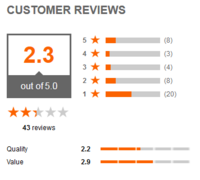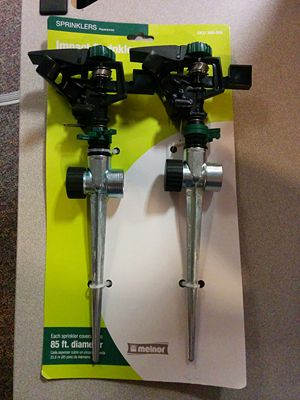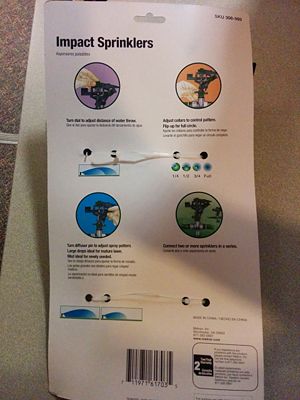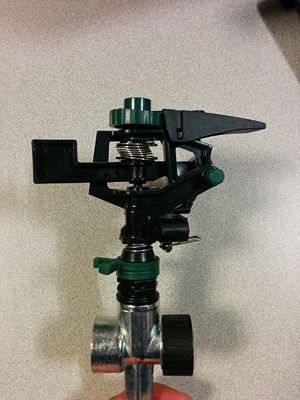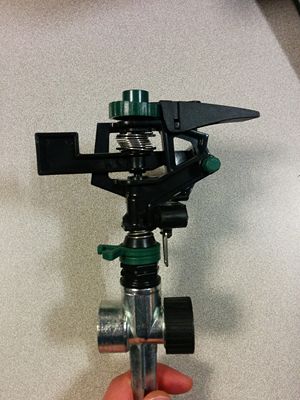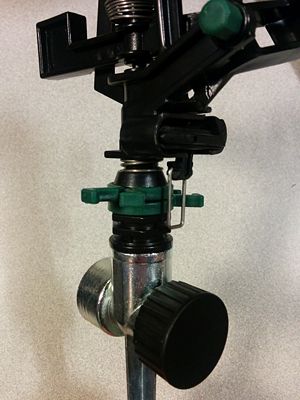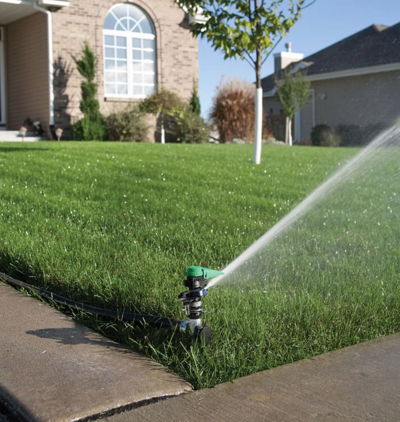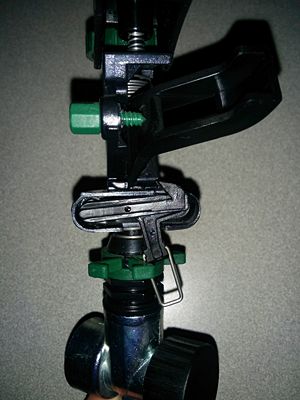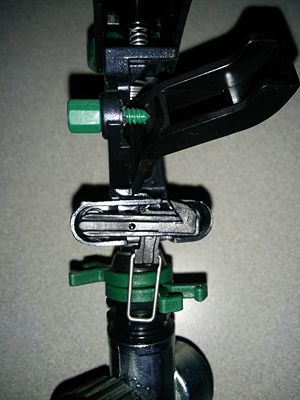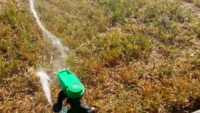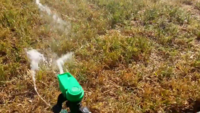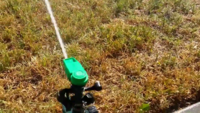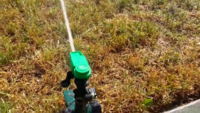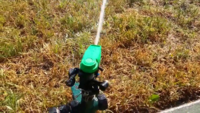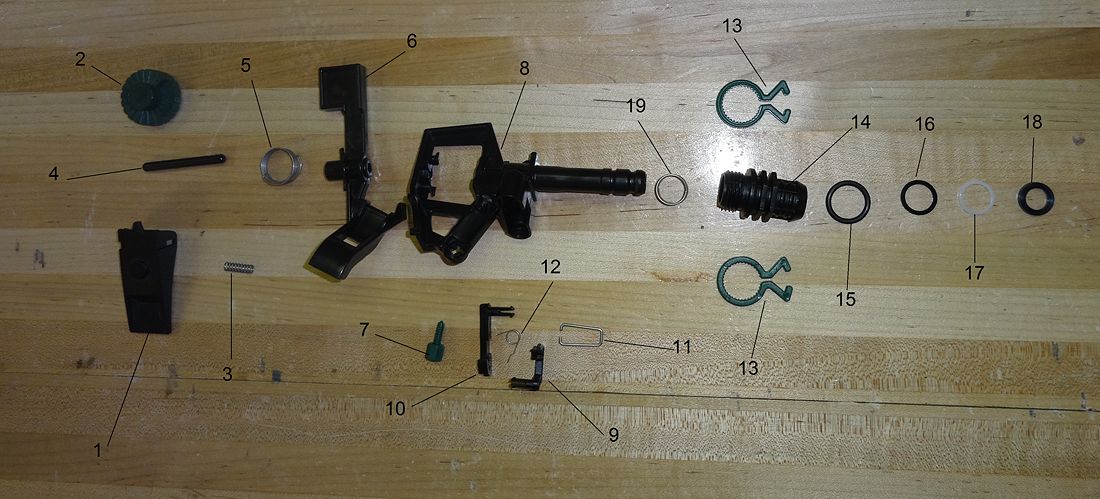Impulse sprinkler
From DDL Wiki
(→Citations) |
(→Step 2: Make adjustments) |
||
| Line 68: | Line 68: | ||
{| style="background: transparent; margin: auto;" | {| style="background: transparent; margin: auto;" | ||
| - | |[[Image:Team7_S14_rotating360.jpg|300px|thumb|center|360° Rotation]] | + | |[[Image:Team7_S14_rotating360.jpg|300px|thumb|center|360° Rotation with Metal Clip Up]] |
| - | |[[Image:Team7_S14_rotatingfixed.jpg|300px|thumb|center| | + | |[[Image:Team7_S14_rotatingfixed.jpg|300px|thumb|center|360° Rotation with Metal Clip Down]] |
|[[Image:Team7_S14_rotatingfixed2.jpg|300px|thumb|center|TO FILL]] | |[[Image:Team7_S14_rotatingfixed2.jpg|300px|thumb|center|TO FILL]] | ||
|} | |} | ||
Revision as of 22:33, 30 January 2014
Contents |
Executive Summary
Stakeholder Needs
- What does the user need?
- The user needs it to be easy to set up. It has to be easy to screw in to a hose without a bunch of water leakage.
- There has to be easy to follow instructions.
- It has to be portable, so that people with larger gardens can easily move it around.
- It has to be durable since sometimes people just leave it in their yard.
- It has to be reliable because the water distribution should be uniform.
- It has to be able to water the lawn effectively while minimizing the amount of water that ends up on the sidewalk or driveway.
- It has to work well with different water pressures.
- It has to be easy to clean and maintain.
- What does the retailer need?
- Inexpensive to produce and therefore inexpensive to acquire (since it is plastic instead of metal).
- Lightweight so it is easy to ship.
- Easy to explain to customers.
- Durable, so customers will not need warranty replacements or repairs
- Compatibility with various mounts from various manufacturers
- What does the manufacturer need?
- Inexpensive to purchase materials
- Inexpensive to create the pieces from the materials
- Simple assembly to keep assembly costs down
- Made of nontoxic materials (or have few toxic wastes) to save costs in preventative measures to protect workers
- Design capable of having schematics clear enough for foremen to understand what needs to be made
- Finished product not need to be maintained in any way to keep storage costs down while waiting for transport
- What does the transporter need?
- Durable enough to not break during rough handling
- Light enough to not over encumber people or vehicles in the transportation sector
- Compact enough to fit plenty into small spaces (maybe they interlock to be smaller and fit more in trucks or boxes)
- Be able to withstand a variable range of temperatures likely to be experienced in transit
- Inexpensive so that should they be broken in transit, there is less monetary loss
- What does the product have?
- The product is easy to set up. All the user has to do is attach the sprinkler to the stake and put the stake in the ground and attach a hose
- It can be adjusted to cover 360° or to just spray a specific region.
- It has a sturdy build, but it has some plastic parts that may be prone to damage
- It has maintenance and cleaning instructions included in the packaging.
- Comments/Observations
A stake is not always required since some places come with underground system. The maintenance instructions are easy to follow; futhemore, there is a clever color code: all the things that need to be adjusted are in green.
Step to using the product
Step 1: Removing from packaging
The sprinkler is tied into a cardboard sheet using plastic ties, which are easily cut.
Step 2: Make adjustments
The sprinkler head can be adjusted for the spray made, by using the built in deflector at the top or adjusting the diffusion of the spray. Furthermore, the plastic tabs at the bottom can be used to determine the angle of the spray, and can be restricted to a straight line or opened up to a 360° distribution.
Step 3:Stick the stake into the ground
Make sure the stake is deep enough that the water pressure won’t displace the sprinkler(picture from Amazon[2] since we couldn't actually test it because of the weather)
Step 4: Turn on Water Flow
Attach a hose to the open end on the stake, and turn on the water. The water pressure can be adjusted from the hose to affect the spray distance, as well as the knob on the top of the sprinkler
How the Product Works Mechanically
The water coming out of the nozzle goes into a S-shaped pipe from which the water goes out in the same direction it went in, but further to the left, allowing a higher torque to be generated. The reactive force to this torque is given by the acceleration of the inertia mass, such that the main frame remains almost immobile. When it then comes back toward the frame because of the spring and hits it, it gives its momentum to the main frame, which rotates a bit. But as it hits the frame, some water goes into the S-shaped pipe and the process begins again.
There are three different settings of the water spray that user input can affect. The first is how diffuse the spray is. The diffusion of the spray is controlled by the diffuser pin, which is the green screw seen in the picture above. If the screw is screwed in all the way, the water stream from the nozzle will hit the screw, causing the spray to diffuse. If the screw is unscrewed, the water stream will be uninterrupted, providing a more focused flow of water.
The second setting that can be adjusted is the distance of the spray. This is affected by the green adjuster knob at the top, which controls the slope of the distance adjuster. The water stream from the nozzle, after potentially hitting the diffuser pin, the hits the distance adjuster. At low distance settings, the distance adjuster is flatter, causing the water stream to deflect off it at a lower angle, and reducing the distance of the spray. At high distance settings, the distance adjuster becomes steeper, causing the water stream to come off at a higher angle, and increasing the distance of the spray.
The third setting that can be adjusted by the user is the angle of the spray, with two different modes. The two different modes (360 continuous/back and forth) are selected thanks to a lever, which can put a small plastic piece up or down each times it hits the metal parts setting the limits. When this piece of plastic is down, then the inertia mass will hit the main frame on it way back, pushing it counter-clockwise; when it is down, the inertia mass will hit the main frame before, just after being moved by the water going out of the s-shaped pipe, pushing it clockwise. That way you can go back and forth between two limits.
Videos testing a very similar model, from Rain Bird; between 04:00 and 05:30 on YouTube Snapsohts:
Part List
The impulse sprinkler examined consists of 19 parts, with 10 pieces being manufactured and 9 purchased off the shelf. The 10 manufactured pieces were all made of plastic, and produced via injection mold, while the off the shelf pieces consisted of 1 metal bracket, 4 metal springs, 3 rubber o-rings, and 1 Teflon ring. Part 13 (Clip), was used twice in the assembly, while each other part was used only once. There were no sub-assemblies identified in the product. The four parts that had to do with user adjustable settings were colored green, while all other plastic parts were made black.
Exploded view
Bill of materials
| Part Number | Name | Quantity | Mass (g) | Function | Material | Manufacturing Process | Image |
|---|---|---|---|---|---|---|---|
| 1 | Distance Adjuster | 1 | 5 | Adjust distance of water thrown | Plastic | Injection | |
| 2 | High Adjuster Knob | 1 | 3 | Adjust the slope of part 1 | Plastic | Injection | |
| 3 | Axial Spring | 1 | <1 | Keeps part 1 up | Metal | Off the shelf | |
| 4 | Axle | 1 | <1 | Allows the arm to rotate in the main frame | Plastic | Injection | |
| 5 | Torsional Spring | 1 | 1 | Brings the arm back towards the main frame | metal | Off the shelf | |
| 6 | Arm | 1 | 13 | Inertia wheel/ Moves when hit by water and rotates the whole sprinkler when hit the frame | Plastic | Injection | |
| 7 | Screw | 1 | <1 | Disperse the water stream | Plastic | Injection | |
| 8 | Main Frame | 1 | 21 | Houses the sub-assembly Arm+Axle+Tosional Spring | Plastic | Injection | |
| 9 | Actuator | 1 | <1 | Triggers the direction lock | Plastic | Injection | |
| 10 | Interrupter | 1 | 1 | Changes the direction of rotation of the sprinkler | Plastic | Injection | |
| 11 | Metal bracket | 1 | <1 | Hits the clips when it should change the direction of rotation and transmit the force to the actuator | Metal | Off the shelf | |
| 12 | Axial Spring 2 | 1 | <1 | Push down the mount to prevent leakage | Metal | Off the shelf | |
| 13 | Clips | 2 | 1.5 | Determine the range of motion | Plastic | Injection | |
| 14 | Mount | 1 | 6 | Connect to the hose and allows the frame to rotate | Plastic | Injection | |
| 15 | o-ring | 1 | <1 | Prevent leakage | Rubber | Off the shelf | |
| 16 | o-ring 2 | 1 | <1 | Prevent leakage | Rubber | Off the shelf | |
| 17 | Ring | 1 | <1 | Allows the frame to rotate inside the mount by reducing friction | Teflon | Off the shelf | |
| 18 | o-ring 3 | 1 | <1 | Holds the frame inside the mount and prevent leakage | Rubber | Off the shelf | |
| 19 | torsional spring 2 | 1 | <1 | Connects part 9 and 10 as an unstable triggering system | Metal | Off the shelf |
Design for Manufacture and Assembly (DFMA)
Failure Mode and Effects Analysis (FMEA)
Design for the Environment (DFE)
Team Roles
Team Leader:
DFMA Lead: Louis Dufour
FMEA Lead: William Bullard
DFE Lead:
Report Lead:
Citations
[1] INSERT LINK HERE
